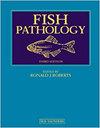Ultrastructural and Molecular Phylogenetic Identification of the Diplomonad Flagellate Spironucleus salmonis Infecting Hatchery-reared Salmonid Fishes in Hokkaido
IF 0.2
4区 农林科学
Q4 FISHERIES
引用次数: 0
Abstract
― Systemic infections caused by diplomonad flagellates belonging to the genus Spironucleus commonly result in heavy mortalities in salmonids. Diplomonad flagellates were found in the intestinal lumen of hatchery-reared juvenile chum Oncorhynchus keta and masu salmon O. masou in Hokkaido. We performed ultrastructural observation and molecular phylogenetic analysis using the small subunit ribosomal RNA gene (SSUrDNA) of the flagellates to clarify their taxonomy. The flagellates showed elongated and tapered nuclei, and sub-apical location of the kinetosomes relative to the nuclei: which are the distinguishing characters of the genus Spironucleus among three genera of parasitic diplomonads. In addition, the flagellates had electron dense plaques at their posterior end, a posterior sac of dense free ribosomes, an electron dense body, and bowl-shaped membranous structures, identifying them as S. salmonis among four Spironucleus species that affect fish. The ultrastructure of the flagellates showed no variations between the two host species of salmon. All the isolated flagellate SSUrDNAs had the same 1,031 bp sequence, and no difference in the sequence. The SSUrDNA showed the highest homology (99%) with S. salmonis among 11 diplomonad flagellates. Thus, this study successfully used ultrastructure diagnosis and molecular phylogenetic analysis to confirm S. salmonis as the diplomonad flagellate that has infected hatchery-reared chum and masu salmon in Hokkaido.北海道孵化场养殖鲑科鱼类感染双鞭毛螺旋体的超微结构及分子系统发育鉴定
-由属螺旋体属的双鞭毛虫引起的全身感染,通常会导致鲑科鱼类大量死亡。在北海道孵化场饲养的梭子鱼幼鱼和马苏鲑鱼幼鱼肠管中发现了双鞭毛虫。我们利用鞭毛虫的小亚基核糖体RNA基因(SSUrDNA)进行超微结构观察和分子系统发育分析,以明确鞭毛虫的分类。鞭毛虫的细胞核呈细长和锥形,动体相对于细胞核位于亚顶端,这是三属寄生双翅虫中螺旋体属的特征。此外,鞭毛虫的后端有电子致密斑块、致密的游离核糖体后囊、电子致密体和碗状膜状结构,这表明它们是影响鱼类的四种螺旋体中的沙门氏菌。鞭毛虫的超微结构在两种宿主鲑鱼之间没有差异。所有分离的鞭毛虫ssurdna均具有相同的1031 bp序列,序列无差异。在11种双鞭毛虫中,SSUrDNA与沙门氏菌的同源性最高(99%)。因此,本研究成功地通过超微结构诊断和分子系统发育分析证实了沙门氏菌是感染北海道孵化场饲养的鲑和马苏鲑鱼的双鞭毛虫。
本文章由计算机程序翻译,如有差异,请以英文原文为准。
求助全文
约1分钟内获得全文
求助全文
来源期刊

Fish Pathology
农林科学-兽医学
CiteScore
1.40
自引率
16.70%
发文量
13
审稿时长
6 months
期刊介绍:
Information not localized
 求助内容:
求助内容: 应助结果提醒方式:
应助结果提醒方式:


